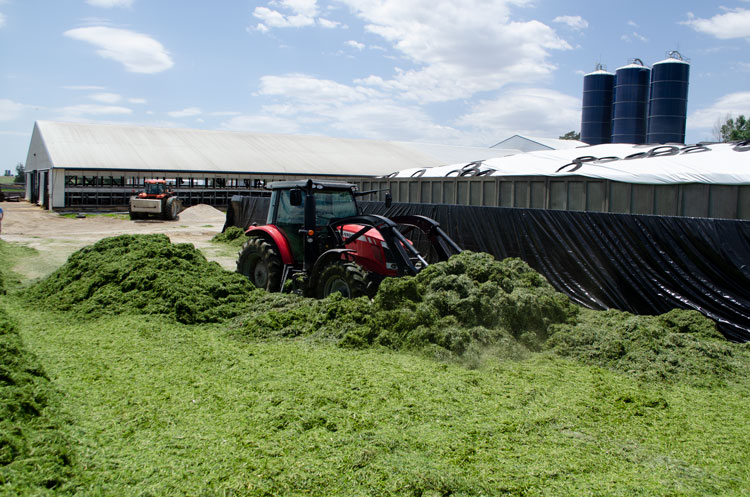
Timely harvest of the forage summits the list compiled by the University of Florida’s Adegbola Adesogan. It’s fully detailed below.
Many years’ worth of research has shown that dry matter losses in forages remain one of the leading causes of lost revenue on farms. Given current conditions on dairies, it’s one that can hardly be afforded. Fortunately, good feed management can be relatively inexpensive and reap great rewards.
In a presentation given for the Virtual Dairy Nutrition and Management Series, Adesogan shared that dry matter forage losses can reach upwards of 30%.
“At each stage, there are losses, and the level of management instituted can determine the amount of loss,” he shared.
In particular, loss begins occurring the moment a forage is cut with residual respiration, wilting and fermentation. These are mostly unavoidable losses. On the other hand, effluent losses after ensiling, secondary fermentation, and aerobic deterioration during both storage and feedout make up significant loss and can be minimized by good management.
These losses can obviously include a reduction in nutrients and energy in the end ration, but it can also leave a mark on the pocketbook. “More spoilage means that the money you spent is for less and less forage,” Adesogan emphasized.
Ten forage must dos
As you head out to harvest summer and fall forages, he offered 10 strategies for reducing dry matter loss.
- Timely harvest. If forage is taken early, seepage will be high while forages harvested late will be tough to get packed at the correct density.
- Rapid wilting. This is essential to reduce respiration losses, and wide swathing can speed drying.
- Proper conditioning. Use the correct conditioner for your forage and understand its impact on losses in the field.
- Chopping well. Sharpness of harvest blades and knives should be checked so that chopping achieves the desired particle lengths to aid in packing and dietary digestion.
- Packing well. This is all about density. “If you are delivering forage too quickly to a storage pile, the temptation is to just spread the forage thinner and keep up with delivery trucks. That’s dangerous for density,” Adesogan warned.
- Using additives and inoculants. Consider use of inoculants that help speed pH drop as it goes into storage and stabilizes feed as it is fed out. Keep in mind that inoculants should be applied in the field.
- Sealing well and promptly. For each day that covering of a pile is delayed, forage is lost. The top of the bunk and edges are particularly susceptible to loss. “It’s important to get rid of the top layer (spoiled forage) at feedout, but it’s more important to intervene to reduce the thickness of that layer,” he said.
- Feeding out properly. Adesogan recommended a narrow face in order to move quickly through the feedout process. Doing so keeps forage really fresh.
- Silo face management. This goes hand-in-hand with point eight. Understand that time exposed to oxygen can activate molds and yeasts that can further degrade feed quality.
- Monitoring density and losses. This can be done through weighing silage as it’s put in and taken out. If that’s not feasible, consider burying burlap bags of feed throughout the storage structure, as feed is put in when they come out, they can be weighed, and loss accounted for.
“Take a wholistic approach to reducing losses,” Adesogan concluded. “At each of the stages, there can be a significant loss.”








